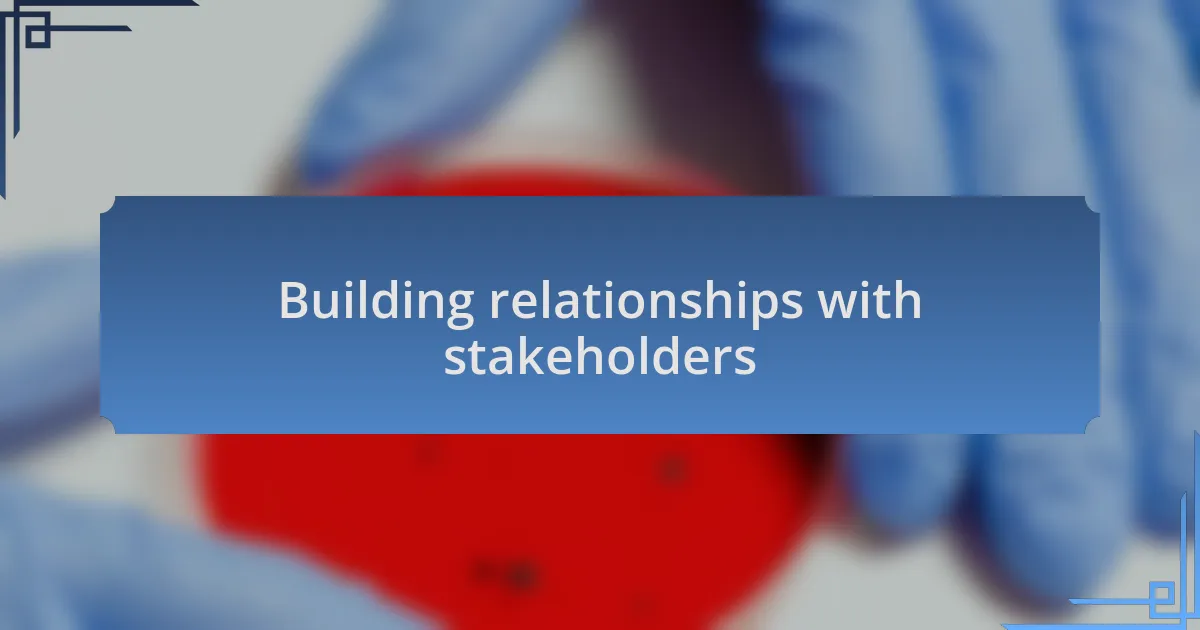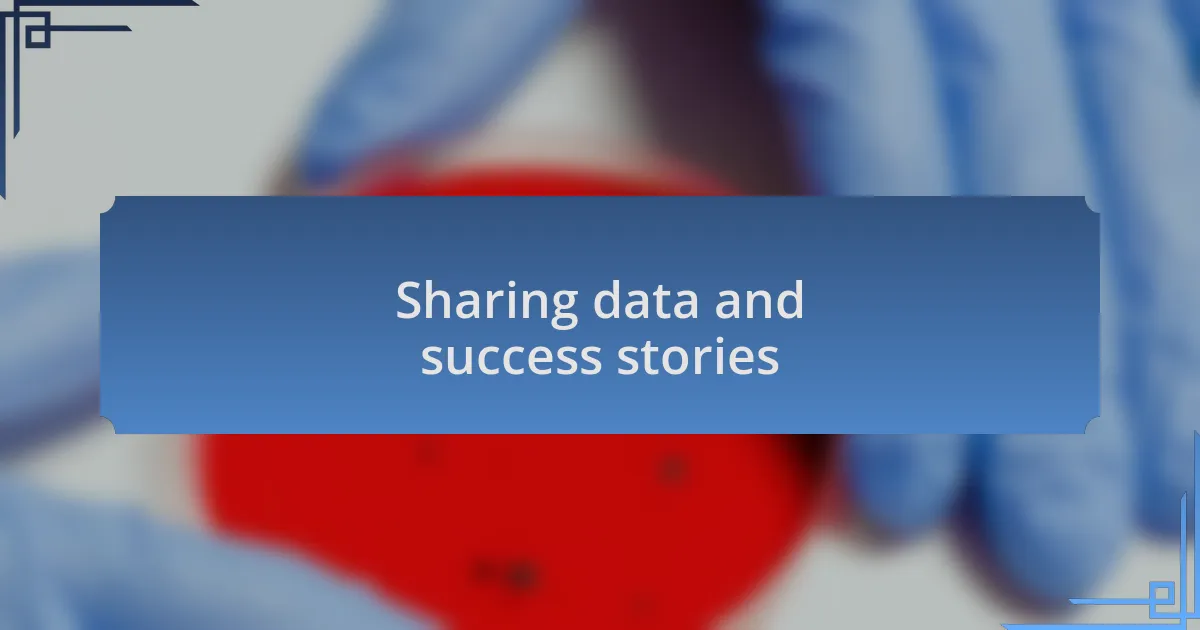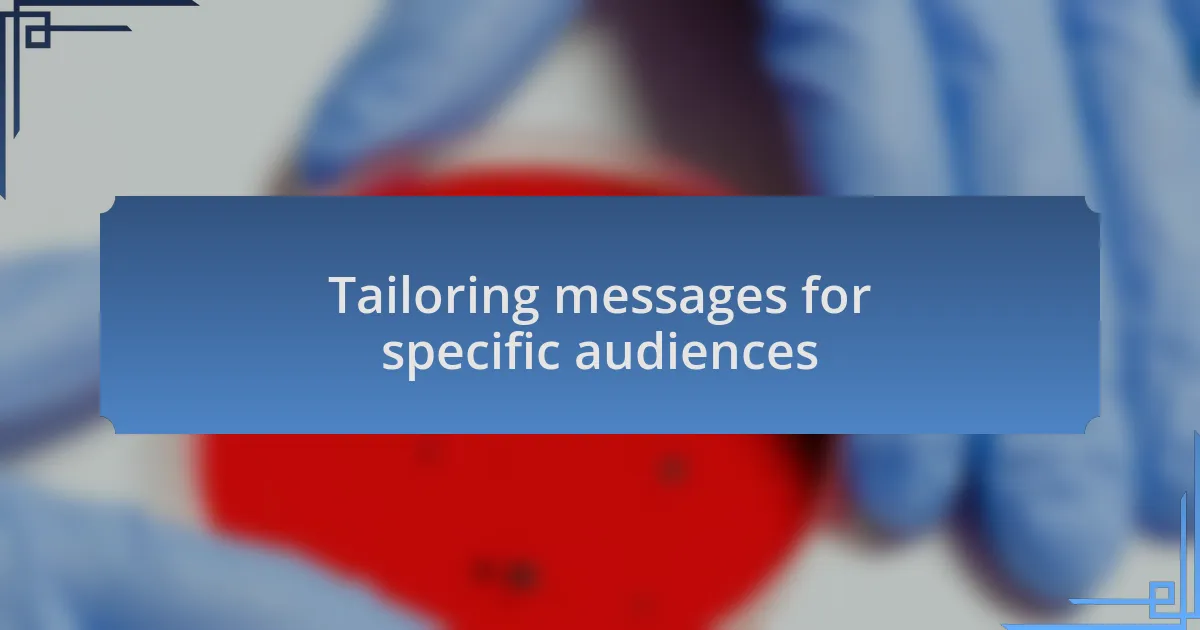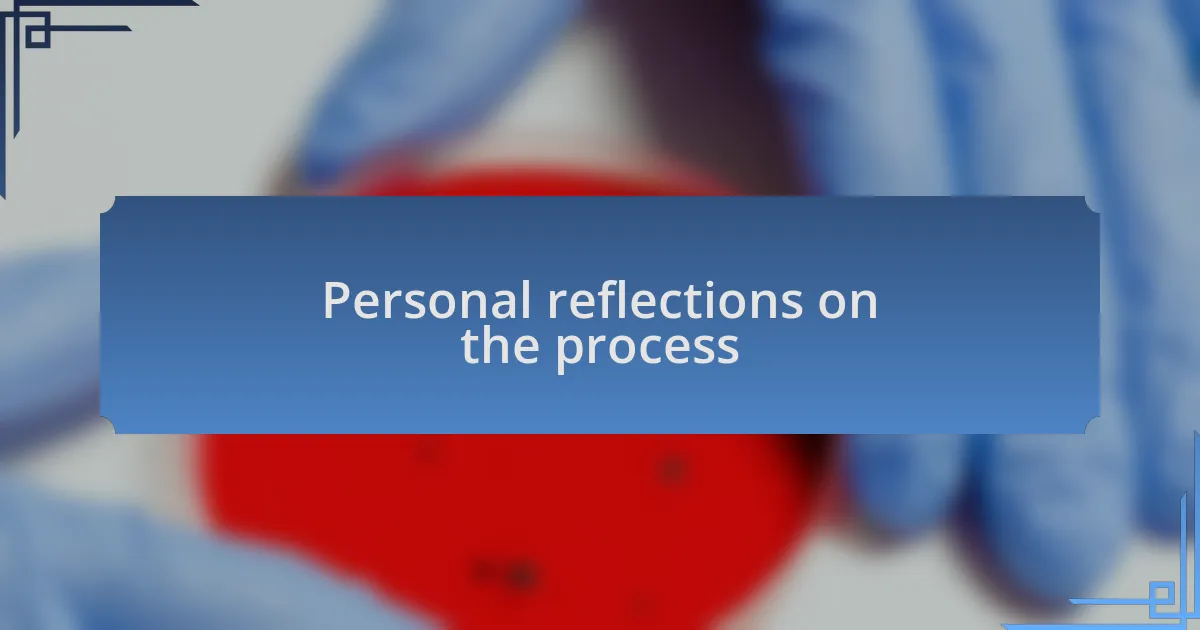Key takeaways:
- Healthcare social media enhances connectivity among professionals, facilitates patient-provider dialogues, and supports inclusive discussions on health topics.
- Engagement with policymakers is vital for driving change; building relationships through storytelling and personal experiences can lead to actionable outcomes.
- Effective communication should balance data and narratives; tailoring messages to the audience’s context fosters greater interest and support for initiatives.

Understanding healthcare social media
Healthcare social media has transformed the way information is shared and consumed within the medical community. In my experience, platforms like Twitter and LinkedIn have become invaluable for connecting healthcare professionals, sharing the latest research, and discussing pressing health issues. It’s fascinating to see how a single tweet can spark a worldwide conversation about a healthcare innovation.
When I first ventured into this space, I was amazed at how passionate and knowledgeable the community was. I remember participating in a Twitter chat where experts from various fields collaborated to discuss mental health awareness. This experience made me question: how often do we take advantage of these platforms to elevate critical conversations on health-related topics? The answer often lies in our willingness to engage and share our insights.
Moreover, the accessibility of social media allows for a more inclusive dialogue about healthcare. I’ve seen firsthand how patients, caregivers, and providers engage in meaningful exchanges, enriching the overall understanding of health journeys. It raises an important consideration: shouldn’t we encourage more of this openness to foster a greater sense of community and support in the healthcare realm?

Importance of engaging policymakers
Engaging policymakers in the healthcare conversation is crucial for driving meaningful change. I recall a spirited discussion I had with a local health official during a community health fair. It struck me how their decisions were deeply influenced by the insights shared on social media. When we share our experiences and data online, we provide them with the tools they need to create policies that truly resonate with the needs of the community.
It’s not just about sharing information; it’s about building relationships. I’ve often found that when I take the time to interact with policymakers on social media, it opens the door to real conversations. For instance, after a few exchanges about mental health funding, one policymaker reached out to collaborate on an initiative. This illustrates how engagement can lead to tangible outcomes, reinforcing the idea that our voices matter in shaping healthcare policy.
Additionally, the urgency of addressing healthcare issues cannot be overstated. Have you ever thought about how quickly misinformation can travel online? I’ve watched debates unfold in real-time, sometimes distracting from the true narratives that need attention. By actively engaging with policymakers, we can ensure that they are equipped with the right information to counteract such confusion, ultimately protecting public health.

Strategies for effective communication
Effective communication with policymakers is about clarity and conciseness. I learned this during a project where I had to present data on healthcare disparities. Instead of overwhelming them with charts, I focused on one clear message: the impact of access to care on community health outcomes. This approach not only made my point resonate but also sparked their interest in addressing the issue directly.
Another strategy I’ve found invaluable is the power of storytelling. Once, I shared a heartfelt account from a patient who struggled to access mental health services due to bureaucratic hurdles. I could see the impact of that narrative—it moved the policymaker and painted a vivid picture of the human stakes involved. This experience taught me that statistics are important, but weaving in real stories can evoke empathy and drive action more effectively.
Additionally, I prioritize follow-ups after my initial communications. A simple thank-you email or a message reiterating the key points can solidify my message in their minds. I remember a time when my follow-up led to an invitation to a roundtable discussion on healthcare access. It was a reminder that consistent engagement can transform a fleeting interaction into a productive relationship, ensuring that the conversation continues well beyond our first exchange.

Building relationships with stakeholders
Building relationships with stakeholders is about establishing trust and mutual respect. In my experience, initiating a simple coffee chat with a policymaker transformed a distant professional connection into a collaborative partnership. I recall discussing not just our projects, but our shared vision for healthier communities. That informal setting fostered a level of openness that formal meetings simply couldn’t achieve.
Something I’ll never forget is the time I was invited to a community health forum where various stakeholders gathered. I seized the opportunity to engage with attendees before the event began, sharing my insights and listening to their concerns. This pre-event dialogue not only provided me with invaluable perspectives but also laid the groundwork for ongoing conversations. Don’t you think that when we show genuine interest in others’ views, it humanizes the dialogue and strengthens our alliances?
Moreover, I have found that being transparent about my intentions is crucial. For instance, when approaching a new stakeholder, I candidly shared my goals and how I believed our collaboration could benefit the community. This openness invited their input and created a two-way street, making them feel valued rather than just another checkbox on my list. It’s interesting how forging these relationships can ultimately shape the policies we all want to see implemented. Isn’t that a compelling reason to invest time in those connections?

Sharing data and success stories
Sharing data and success stories has been one of the most effective methods for influencing policymakers in healthcare. I remember presenting a data-driven case study at a local health conference, highlighting a successful initiative that improved patient outcomes. The reaction was immediate; policymakers were intrigued and engaged. When I shared clear metrics paired with a compelling narrative, it painted a vivid picture that statistics alone could never convey.
There’s something powerful about illustrating success through stories. I once worked with a nonprofit that had transformed a struggling clinic into a thriving community resource. By documenting not only the hard numbers but also the personal stories of patients whose lives had been changed, I was able to create a presentation that resonated deeply with lawmakers. Their faces softened as they realized these statistics represented real people, real lives, and real improvements. Wouldn’t you agree that engaging emotions can bolster our arguments in ways that data alone cannot?
Through these experiences, I have learned that sharing success stories is not just about reporting achievements; it’s about creating a vision for what’s possible. When I followed up with those policymakers, I was able to spark meaningful discussions on expanding similar initiatives. I find that when we convey our successes in relatable terms, we don’t just inform—we inspire action. Isn’t that the real goal of our outreach efforts?

Tailoring messages for specific audiences
Tailoring messages for specific audiences is crucial in my approach to engaging policymakers. I recall a time when I tailored a presentation for a committee primarily composed of healthcare administrators. Instead of drowning them in technical jargon, I focused on cost-effective strategies and potential resource savings. By aligning my message with their priorities, I noticed their immediate interest and the questions they posed reflected their eagerness to explore practical applications. Isn’t it fascinating how adjusting our language can turn passive listeners into active participants?
I also learned that understanding the emotional context of a policymaker can significantly enhance communication. For instance, I once engaged with a local legislator who had a personal connection to mental health issues in her family. By incorporating stories that highlighted the importance of mental health resources, I noticed her demeanor shift. She became not just a policymaker but an advocate, drawing from her experiences to enhance our discussion. Have you ever considered how our audience’s experiences might inform their response?
In crafting messages, I strive to speak directly to the values of the audience. When addressing a group focused on youth health, I chose to highlight success stories of young people overcoming health barriers through community programs. By tapping into their commitment to youth advocacy, I found it easier to spark passion and enthusiasm around proposed initiatives. I often wonder, how much more effective could we be if we consistently made the effort to connect our messages to the core values of our audience?

Personal reflections on the process
Reflecting on my journey, I often think about the moments when my efforts to engage policymakers truly resonated. I vividly remember one particularly challenging meeting with a group of state officials where I felt the pressure to advocate for a new health initiative. While preparing my points, I decided to share a personal story about my grandmother’s battle with diabetes. The room seemed to hold its breath, and I could see that my vulnerability transformed their expressions from skepticism to genuine interest—an eye-opening experience that highlighted how relatable narratives can bridge gaps.
As I engaged with various stakeholders, I noticed how crucial it is to be empathetic in these discussions. One instance that stands out was when I spoke to a committee that was initially resistant to change. By acknowledging their fears and uncertainties about new healthcare policies, I fostered an atmosphere of trust. This approach made me question, how often do we overlook the human element in policy discussions? It became clear to me that recognizing and validating emotions can turn objections into collaborations.
In reflecting on the process of educating policymakers, I often find myself pondering the balance between data and storytelling. During one presentation, I integrated both—using compelling statistics alongside personal testimonies from those affected by health disparities. The feedback was overwhelmingly positive, and several committee members shared how the blend of facts and emotions helped them see the bigger picture. How essential is this combination for effective communication? From my perspective, it can elevate our discussions from mere facts and figures to poignant narratives that inspire action.